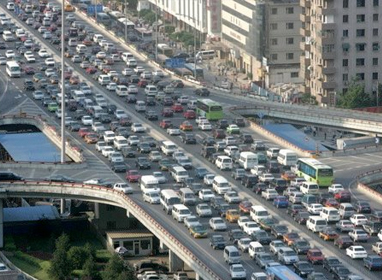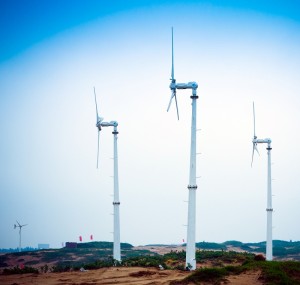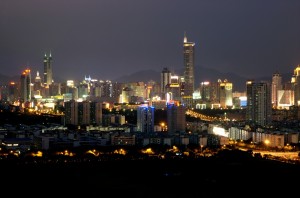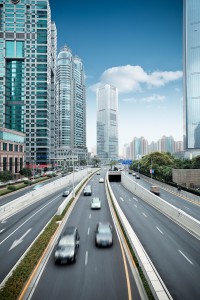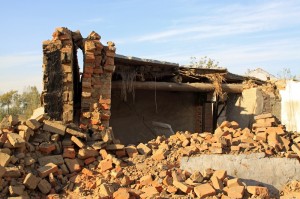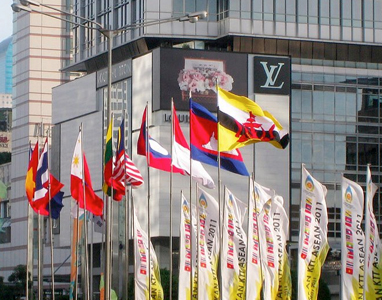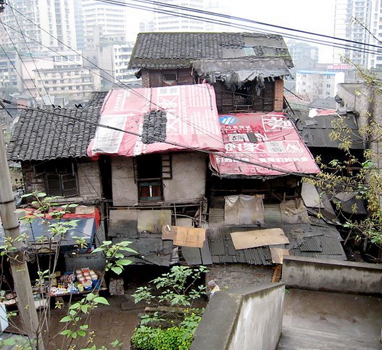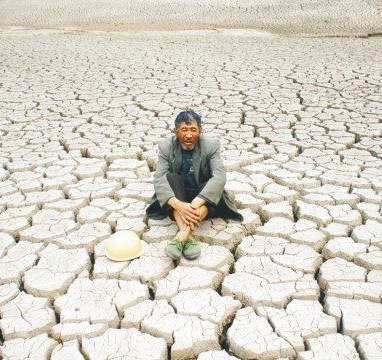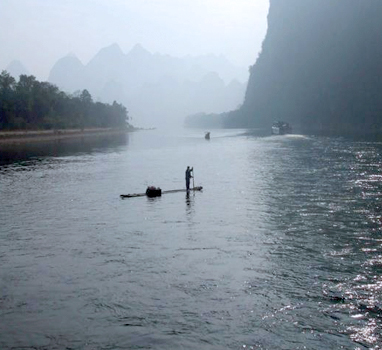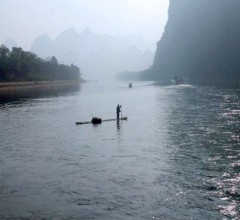China’s Challenging Environment
Introduction
The state of Chinese environment today must be placed in the context of the extraordinary development that it has accomplished and of the continuing challenges it will face in the upcoming decades. Since 1981, China has lifted approximately 500 million people out of absolute poverty, an unprecedented achievement. Yet, in 2008, 172 million Chinese citizens still lived on less than $1.25 a day and about 400 million earned less than $2 a day. China’s population continues to grow, and is expected to peak at 1.4-1.5 billion people by 2030. Inequality in China has increased significantly both within the population, between rural and urban residents, and between different regions within the country. Those Chinese moving into the middle classes are demanding a better diet, modern housing, and the consumer goods which have long been common in the West.
China has raised the per capita income and standard of living of its citizens by providing an export-led, average GDP growth rate of over 8% over the last several decades. Much of that growth was fuelled by high- sulphur coal, with lax environmental regulation. The result has been a massive degradation of China’s environment. In 2006, China surpassed the United States to become the world’s largest source of carbon dioxide emissions. An estimated 70% of China’s rivers and lakes are currently contaminated, and 300 million Chinese people drink tainted water.
In part, China has achieved its unparalleled economic growth since the launch of its 1980 market reform through a policy of greater decentralization. The central government today has less of an ability to impose absolute control over provinces than it had previously. Environmental law has also been slow to develop and has not been aggressively enforced. Moreover, China’s “Century of Humiliation” has caused it to be protective of its sovereignty, and suspicious of foreigners and their environmental agenda. Indeed, China has opposed the monitoring of its greenhouse gas emissions as it views this as excessive intervention in its internal affairs. Partly as a result, China has not been transparent about environmental data. Its citizens, even its scientists, and the international community often lack the information needed to understand the full impact of China’s development on Chinese and international eco-systems. The basis of the Chinese Communist Party’s legitimacy has also shifted during the last three decades. Though it cannot ignore issues that threaten social stability, CCP power is now more dependent on its ability to continually deliver improving living standards than it was previously.
This has led China to follow a “grow now, clean-up later” approach to development. In international negotiations, China has vigorously opposed any binding, monitored agreement to reduce global emissions of greenhouse gases, although more recently it has pledged voluntarily to improve its own energy efficiency relative to economic output. Until recently, China’s calculation has been that short-term mitigation is more costly to the regime than adapting to a changing climate later, particularly given development’s immediate financial, political and social benefits. China’s 12th Five Year Plan seems to marks a shift in this attitude. Unlike previous plans, climate change and energy are featured prominently, and a strong emphasis is placed on targeting a more sustainable average annual GDP growth of 7%. The 12th Five Year Plan also adopts as binding domestic law the voluntary climate pledges China first made before the Copenhagen 2009 United Nations Framework Convention on Climate Change. More recently, in a joint announcement with President Obama in November 2014, Chinese President Xi Jinping announced a target of peaking carbon dioxide emissions around 2030 with a goal of reaching that target earlier, and an intention of increasing the share of energy coming non-fossil fuel sources to 20% by 2030.
That said, China’s 11th Five Year Plan also called for a slower average GDP growth rate of 7.5%, which China significantly exceeded. Ambitious local officials often consider Five Year Plan objectives as targets to be exceeded. GDP growth is a way for provincial officials to compete with rival regions and get promoted. Indeed, historically the performance evaluation system of government officials in China stresses the economic indexes while ignoring environmental protection indexes. This incentivizes local officials to prioritize GDP growth. As environmental protection can hamper GDP growth, environmental protection indexes have previously only constituted a small part of performance evaluation. After the 11th National People’s Congress in March 2011, Premier Wen Jiabao acknowledged this when he noted that GDP-oriented criteria for evaluating performance and government officials was an obstacle to achieving the environmental goals laid out in China’s 12th Five Year Plan. As a result, the central government would work toward adopting new performance evaluation criteria for local governments they gave more weight to the efficiency of economic growth, environmental protection and living standards improvements. Yet it will remain difficult to deter business leaders and officials who are profiting handsomely from rapid development.
Ultimately, many factors will influence China’s environmental policies in coming decades, not all of which are under central government control. Factors which encourage sustained pollution include: the continued need to provide economic growth to ensure political and social stability; the difficulty in implementing national environmental policies at the regional level; the ineffectiveness of MEP (China’s Ministry of Environmental Protection); and general corruption. Factors which are acting to protect the environment include the increasing recognition by Beijing of China’s limited bio-capacity, the increasingly vocal demands of its citizens to protect the environment, China’s significant investments in green technologies, and China’s opportunity to lead the world in green markets. It is still unclear which combination of factors will ultimately have the greatest influence on China’s short, medium and long-term environmental policies, or the state of its environment. That said, there is an undeniable trend toward recognizing the importance of environmental protection in China.
The State of China’s Environment
China’s environmental statistics are grim. In 2009, for instance, China surpassed the US to become the world’s largest energy user. While China’s average per capita emissions remain below those of the US, they have overtaken the global average, and are rising rapidly. Despite efforts by China to improve its energy efficiency, its CO2 emissions from fossil fuels rose by almost 80% during the past decade. The Chinese government recently conceded that only 3 of its 74 major cities met national air quality standards during 2013. Indeed, the Beijing-Tianjin-Hebei area had an annual average levels of PM2.5 – tiny pollutants smaller than 2.5 microns – at 106 micrograms per cubic meter, more than 10 times the World Health Organization’s safety level of 10.
This pollution is affecting countries worldwide, and not just because of the consequences of global warming. An analysis of air in places as disparate as San Francisco and Kyoto found chemical signatures of coal-fired Chinese power plants, smelters and chemical factories. Additionally, China’s water is also both in short supply and highly polluted. Growing urbanization is increasing both China’s air and water pollution and exacerbating its water scarcity since urban dwellers consume three times more water and energy than do rural residents. Moreover, an estimated 70% of China’s rivers and lakes are now polluted. In 2009, 57% of the 7 monitored river basins had pollution levels of I-III, suitable for drinking, swimming, household use, and able to support aquatic life. 24% of the water in China’s rivers had levels of IV-V, water unfit for swimming, but suitable for industrial purpose. 19% had V+, meaning that the water is considered useless, unfit for industry or agriculture. 23% of China’s key lakes and reservoirs had water grades of I-III, 42% IV-V and 35% V+. 2.3% of groundwater in 8 regions was rated I-II, 23.9% was graded III, and 73.8% ranked IV-V.
Stresses to China’s environment will continue to grow in the future. By 2030, three quarters of the 11 gigaton projected increase in energy-related global CO2 emissions is expected to be generated by China. By 2030, an estimated 390 million vehicles are projected to fill China’s roads, an almost 3 fold increase from today. Urban floor space will need to double to accommodate the approximately 350 million additional people moving into cities. At the same time, an expanding number of Chinese will rise into the middle classes, increasing demands on the environment further. Even with its aggressive development of alternative fuels, by 2030, it is still estimated that China will need to burn almost 200 million more tons of coal than in 2005 to provide sufficient heating and electricity for its new urban citizens. Indeed, overall coal-based power generation capacity is projected to triple between 2005 and 2030. Proper desulfurization of coal plants will require sizable capital investments and extensive regulatory monitoring. Urbanization and rising living standards will also increase demand for greater varieties of food. China will need to control desertification, overgrazing, the overuse of fertilizers, and over-logging in order to preserve the productivity of its arable lands. Moreover, managing the growing amount of urban waste will be a major challenge.
China’s Position on International Climate Negotiations
Yet, despite pollution levels which are increasingly having consequences for both China and the world, China aggressively defends its right to develop and thus pollute. In 2007, China’s National Development and Resources Commission reiterated China’s past position that “developed countries should take the lead in reducing greenhouse gas emissions as well as providing financial and technical support to developing countries. The first and overriding priorities of developing countries are sustainable development and poverty eradication.” In other words, as a developing country, China must give priority to economic development over environmental protection. Domestic environmental issues take precedence over global concerns. As developed countries are responsible for the large part of historical degradation, they must limit their emissions first, and pay for and transfer technology to developing states to address their environmental problems. These payments are not loans but compensation for the developed world’s historical environmental damage. Developed countries must also take a lead in the reduction of greenhouse gases, and the implementation of signed agreements. The sovereignty of the country’s national resources must be respected. There should be no linking of aid or the implementation of sanctions to any formal agreement to change environmental practices. Environmental considerations should not be used as a reason to interfere in the international affairs of a developing country, or as a reason to impose trade barriers.
China has expanded its position in recent years by noting that population control is one of the most successful strategies to curb emissions. China argues that given its effective population control since 1970, China should be given credit for this key mitigation effort. Additionally, as China has four times more people than the US, China should have a higher emissions quota. China has also advanced the argument that having a modest but dignified level of well-being – which some reason to be about $7500 annually – is a basic human right which takes priority over environmental concerns. China argues that those below this development should be exempt from any requirement to pay for climate policy which indeed includes a large part of its citizens. China contrast this argument with the fact that the richest 20% of the world use over 75% of global resources and emit 51% of global CO2 emissions to maintain their way of life. The Chinese also point out that the ownership and responsibility for emissions is a nuanced discussion; approximately 33% of China’s domestic 2005 CO2 emissions, for example, resulted from the production of exports, raising the question as to whether consumers also bear responsibility for these emissions because of their purchasing decisions.
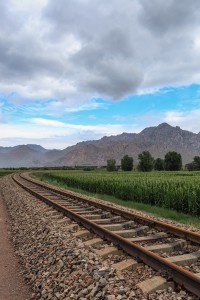 To bolster its negotiating position, in the past China has formed an alliance with developing and very poor nations. In 1991, for instance, in advance of United Nations Conference on Environment and Development, China convened a forum attended by 41 developing countries which resulted in a unified negotiating position largely reflective of China’s views. During 1987 negotiations for the Montréal protocol to protect the ozone layer, China joined India and Brazil to insist that without significant financial support and transfers of technology from the international community, neither country would sign the Montréal Protocol on Substances that Deplete the Ozone Layer. This resulted in the establishment of the multilateral fund to offer developing countries assistance in the form of both financial compensation and technological transfers. The international community agreed to establish the fund because China and India’s emissions would cancel out the positive impact of the other signatories if they did not participate. That said, China was quick to sign the 1993 Convention on Biodiversity as it was not a threat to its economic growth. With funding in hand, China has worked to meet its commitments under the Montréal Protocol. For instance, in December 2011, China’s Ministry of Environmental Protection announced its HCFC Phase-out Management Plan (HPMP), a US$270 million project to cut consumption of Hydro chlorofluorocarbons (HCFCs) by 1 January 2015 by 17%. As China is the largest producer, consumer and exporter of HCFCs in the world – more than 70% of global HCFC production, and 50% of total consumption of developing countries – its current campaign is essential for the successful implementation of the Montreal Protocol. The plan is aimed at halting the 11% annual growth in Chinese HCFC production that has occurred in the last three years. Christophe Bahuet, United Nations Development Programme (UNDP) Country Director of China expressed optimism that China would reach its targets. Recently, China’s climate stance alongside developing and very poor countries has shifted. During the 2009 Copenhagen conference, for instance, China joined forces with the large, increasingly wealthy so-called BASIC developing states – Brazil, South Africa, India and China – to refuse binding limitations on greenhouse gas emissions, despite entreaties from extremely vulnerable poor countries, especially small island states, whose very existence is at threat by global warming. To this extent, China is no longer an unqualified defender of the developing world.
To bolster its negotiating position, in the past China has formed an alliance with developing and very poor nations. In 1991, for instance, in advance of United Nations Conference on Environment and Development, China convened a forum attended by 41 developing countries which resulted in a unified negotiating position largely reflective of China’s views. During 1987 negotiations for the Montréal protocol to protect the ozone layer, China joined India and Brazil to insist that without significant financial support and transfers of technology from the international community, neither country would sign the Montréal Protocol on Substances that Deplete the Ozone Layer. This resulted in the establishment of the multilateral fund to offer developing countries assistance in the form of both financial compensation and technological transfers. The international community agreed to establish the fund because China and India’s emissions would cancel out the positive impact of the other signatories if they did not participate. That said, China was quick to sign the 1993 Convention on Biodiversity as it was not a threat to its economic growth. With funding in hand, China has worked to meet its commitments under the Montréal Protocol. For instance, in December 2011, China’s Ministry of Environmental Protection announced its HCFC Phase-out Management Plan (HPMP), a US$270 million project to cut consumption of Hydro chlorofluorocarbons (HCFCs) by 1 January 2015 by 17%. As China is the largest producer, consumer and exporter of HCFCs in the world – more than 70% of global HCFC production, and 50% of total consumption of developing countries – its current campaign is essential for the successful implementation of the Montreal Protocol. The plan is aimed at halting the 11% annual growth in Chinese HCFC production that has occurred in the last three years. Christophe Bahuet, United Nations Development Programme (UNDP) Country Director of China expressed optimism that China would reach its targets. Recently, China’s climate stance alongside developing and very poor countries has shifted. During the 2009 Copenhagen conference, for instance, China joined forces with the large, increasingly wealthy so-called BASIC developing states – Brazil, South Africa, India and China – to refuse binding limitations on greenhouse gas emissions, despite entreaties from extremely vulnerable poor countries, especially small island states, whose very existence is at threat by global warming. To this extent, China is no longer an unqualified defender of the developing world.
Increasingly, China has set forth voluntary, non-binding, and non-verifiable emission reduction targets as it did before Copenhagen, when it stated that it would “endeavour to lower its carbon dioxide emissions per unit of GDP by 40-45% by 2020 compared with the 2005 level; decrease its share of non-fossil fuels and primary energy consumption to about 15% by 2020; increase forest coverage by 40 million hectares, and forest stock by 1.3 billion m³ by 2020 from the 2005 levels.” Likely, China’s willingness to put forward these targets was because they were consistent with policies China was already adopting nationally. Indeed, China has many domestic policies related to climate change – to increase energy efficiency and to use more alternative energy, for example – yet these policies are often driven by objectives such as increased energy security, enhancing technological innovation and arresting desertification instead of outright greenhouse gas mitigation.
The Cost of Environmental Degradation to China
Despite its negotiating position in the international community, domestically, China recognizes that environmental protection is a pressing issue. In 2007, the World Bank assessed that China’s combined health and non-health cost of outdoor air and water pollution to be $100 billion annually conservatively estimated, or 5.8% of the country’s GDP. Four of the ten most polluted cities in the world are in China. The World Bank calculated that up to 400,000 people in China die each year from outdoor air pollution, 30,000 from indoor air pollution, and 60,000 from water pollution. An estimated 40% of all the global deaths linked to air pollution occur in China. This is reflected in greater rates of lung cancer and respiratory system problems. China’s water is also producing higher rates of various health abnormalities including liver and stomach cancer, stunted growth, miscarriages and birth defects. Polluted water is also exacerbating China’s severe water scarcity problems. It is conservatively estimated that urban water scarcity costs China about $14 billion annually in lost industrial output, and rural water scarcity generates an additional $24 billion in annual costs. In 2000, the Ministry of Agriculture related that almost 20% of agricultural and poultry products in major industrial and mining districts are irrigated with contaminated water. On China’s current trajectory, the health costs of air and water pollution could triple by as early as 2020, particularly as China’s population begins to age more rapidly.
Moreover, China’s 2011 “Second National Assessment Report on Climate Change” estimated that global warming will significantly impact China in the coming decades. In particular, the report predicted that China’s grain output could fall by between as much as 20% by 2050, putting greater pressure on food prices, and threatening China’s food security. The report also forecasted that global warming would lead to severe imbalances in China’s water resources within each year, and across the years. By 2050, eight of China’s provinces and provincial status cities could face severe water shortages (meaning less than 500 m³ per resident), and another 10 could face less dire chronic shortages. Additionally, since the 1950s, over 82% of Chinese glaciers which feed many of China’s major rivers have been in a state of retreat. With the report predicting that global temperatures will rise between 2.5 and 4.6°C above the 1961-1990 average, this rate of glacial retreat will increase. The report also estimated that sea levels will rise between 10 to 15 cm in the next 30 years, pressing up against China’s big coastal cities and export zones, making them more vulnerable to typhoons and flood tides unless China invests heavily in new coastal embankments.
Social unrest is also an increasing consequence of environmental degradation. The Chinese government received 750,000 environment-related complaints in 2008, a number that has increased approximately 30 percent annually since 2002. This environment-related social unrest risks threatening central authority. Moreover, it is estimated that by 2025 between 30 and 40 million more people may need to relocate due to environmental degradation. The environmental migrants are on top of the high numbers of Chinese citizens slated to be relocated as the result of China’s aggressive dam building.
Challenges to Implementing Environmental Policy in China
Yet while China recognizes the danger of its increasingly stressed bio-capacity, implementing effective environmental policy remains difficult. Perhaps the greatest challenge to implementing effective environmental policy in China is the sheer number of Chinese citizens still well within poverty levels, and the inequality of wealth distribution throughout the country. Until poverty and inequality eradication have been generally achieved, economic growth will be prioritized. Wu Shunze, Deputy Director General of the Chinese Academy of Environmental Planning noted this when he stated that China estimates its industrialization will be completed by 2030, that its use of resources and energy will peak between 2020 and 2030, and that between 2030 and 2050, China will then begin to see a greater shift toward a service-driven economy, and begin to repair environmental damage. China thus anticipates that until 2030, the relationship between the economy and the environment will be “in contradiction”, and will only become preliminarily “harmonious” by 2030.
Until then, China will look for win-win solutions where its environmental policies improve energy security, reduce production costs, promote job creation, and provide it with technological advantage in the world markets without impeding development at home. China’s belief in its ability to “clean-up later” is founded not just on western experience, but on its millennia old tendency to control and shape nature – uprooting forests, redirecting rivers, filling in swampland, building dams and dykes. Successive Chinese dynastic and now Communist governments have long pursued domination over ecological resources.
China’s growing focus on inequality is an increasingly key factor in its environmental discourse as inequality is potentially an existential threat to the Communist Party’s monopoly of power. As opposed to always approaching China as if it were monolithic, international engagement with China about the environment needs to be across multiple levels. What might be expected of China’s increasingly wealthy urban coasts can be an unreasonable demand for China’s poor western areas. Similarly, it is difficult for Beijing to set uniform, national environmental policy. Internal pollution mitigation will require strategies that address challenges at the global, regional, intraregional, city, small town and village levels. In 2009, President Hu articulated this by arguing that China’s wealthier eastern regions must take the first major step toward emissions mitigation, while poor western regions continue to catch up economically.
Since 1980, China has nevertheless implemented a flurry of environmental regulation. Decentralization after the 1980 market reform means that Beijing’s has increasingly imperfect control over its local governments. This exacerbates the environment’s “Tragedy of the Commons” principle. The problem of discharge into China’s rivers is illustrative. To enhance their competitiveness, each locality has an incentive for its factory to discharge its waste as cheaply (often illegally) as possible, with each factory’s waste seemingly inconsequential in relation to the river as a whole. Ultimately, the accumulation of its and other factories’ waste devastates the river. This effect is compounded by the fact that pollution fines are low and that natural resources are undervalued. Additionally, those most affected by river pollution do not always speak out against pollution when their livelihoods are dependent on the offending industry. While farmers, for instance, might suffer lower crop yields, sick animals, and deteriorating health because of polluted water, their income can nevertheless be reliant on the polluting factory which may be providing family members with jobs, investing in local infrastructure and purchasing farm produce, which in itself might be contaminated.
The ineffectiveness of local environmental protection bureaus compounds the problem. Numerous Chinese agencies are responsible for overseeing environmental protection depending on the pollution problem. These ministries often compete for international and domestic environmental funding. Their poor coordination and delineation of public duties creates conflicts of interest, especially at the local level. Nationally, responsibility for environmental protection in China rests primarily with the Ministry of Environmental Protection (MEP) formerly the State Environmental Protection Agency (SEPA). While elevation to a cabinet level ministry has enhanced its power, MEP still remains a relatively weak voice within China’s government. Historically, environmental funding has been low. China’s Environmental Protection Bureaus (EPBs) monitor environmental conditions at the local level. Despite MEP supervision and the bureaus seemingly large manpower – China’s roughly 2500 EPBs employ some 60,000 people – in general, the EPBs report to local governments for budget and resource support. This gives the local government leverage to protect local interests. A chronic lack of funding also hampers enforcement. Bureaus often have insufficient staff and cars for inspections. Factories are aware of these constraints and use this to their advantage by, for instance, discharging at night. Even when bureaus launch campaigns to close or sanction problematic companies, the companies often relapse into violation or reopen once the campaigns quieten down. Also, fines often cannot be applied to companies across administrative boundaries. Counties and cities have often shifted polluting enterprises near the border with downstream counties, so river discharge is carried quickly into the next province. Pollution fines also partly fund EPB activities. This can lead to perverse incentives where a bureau can encourage the persistence of pollution problems in order to pay its wages.
Courts are also often ineffective and enforcing environmental law. While China has an increasing level of environmental legislation, public awareness of environmental law remains poor. Given the poor availability of environmental data, when cases are brought to court, it is difficult for victims to provide conclusive evidence. Additionally, many polluting companies pay relatively significant levels of local taxes. As most courts are funded and staffed by local governments, there is an incentive to interfere with court proceedings in order to protect polluting companies and the taxes which flow from them. As a result, many environmental court cases are thrown out on the basis of flimsy reasoning.
Corruption is also a factor in China’s environmental degradation. In China, corruption can be seen as bribery and cronyism when developing environmental policy and when promoting harmful environmental practices, embezzlement of environmental funding, and bribery during environmental inspections and issuing of permits. Environmental corruption can also be connected to organized crime, particularly in mineral, timber and wildlife trafficking.
Trends
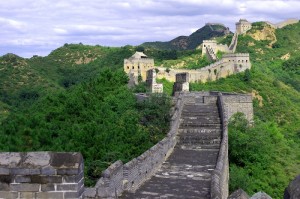 What is certain is that, even if it were to implement every environmental strategy discussed in China’s 12th Five Year Plan, China’s greenhouse gas emissions will continue to rise. What is uncertain is the level of that increase. Many factors influence the rate of environmental degradation within China, and its contribution to global warming. On the negative side, the decentralization that has occurred as China has transitioned to a market economy means that it has less absolute control over its regions than it did historically, so that enforcing national environmental regulation remains challenging. Moreover, courts and regional Environmental Protection Bureaus are often funded at the local level, reinforcing regional control over the implementation of environmental policy. Currently, most market and political incentives encourage local officials to continue to prioritize rapid economic development. While Beijing has indicated a move toward decoupling promotion from GDP growth, most local party officials will continue to be strongly incentivized by the financial benefits that accrue to their region and to themselves as a result of strong economic performance. Corruption will also continue to undermine environmental protection.
What is certain is that, even if it were to implement every environmental strategy discussed in China’s 12th Five Year Plan, China’s greenhouse gas emissions will continue to rise. What is uncertain is the level of that increase. Many factors influence the rate of environmental degradation within China, and its contribution to global warming. On the negative side, the decentralization that has occurred as China has transitioned to a market economy means that it has less absolute control over its regions than it did historically, so that enforcing national environmental regulation remains challenging. Moreover, courts and regional Environmental Protection Bureaus are often funded at the local level, reinforcing regional control over the implementation of environmental policy. Currently, most market and political incentives encourage local officials to continue to prioritize rapid economic development. While Beijing has indicated a move toward decoupling promotion from GDP growth, most local party officials will continue to be strongly incentivized by the financial benefits that accrue to their region and to themselves as a result of strong economic performance. Corruption will also continue to undermine environmental protection.
As the Chinese Communist Party’s legitimacy now rests in large part on its ability to provide a rising standard of living for its citizens, China will continue to need strong economic growth to raise its approximately 400 million citizens still living on $2 or less per day out of poverty, and provide them with a “modest dignified level of well-being”. In addition, growing inequality throughout the country is placing greater pressure on CCP leadership to provide opportunity for those regions, mainly in the west, that significantly lagged behind wealthier east coast provinces. While China increasingly speaks of the importance of sustainable development, and although it is increasingly investing in green technologies, it is unlikely that these technologies can come online rapidly enough to offset all the pollution that will be emitted as China works to provide a reasonable standard of living for the bottom third of its population. Additionally, China is racing against the problem of a rapidly aging population, trying not to grow old before it grows rich and before the competitive advantage of its huge inexpensive workforce begins to dissipate.
Given the challenges of China’s decentralization, and the pressures of poverty, inequality and a rapidly aging population, what is most likely is that China will continue to be the world’s largest contributor to greenhouse gas emissions and environmental degradation for at least the next two decades. Yet within this high greenhouse gas emission model, there will be an increasing trend toward bringing on line a rapidly growing level of alternative fuels, green technologies and pro-environmental protection policies such as environmental taxes and cap-and-trade pilot programs. Indeed, by the end of 2030, it is possible that China will be a world leader in many of the green technologies that will be most impactful on protecting our global environment going forward.
In international climate change negotiations, China will continue to refuse to be constrained by internationally imposed targets which can be monitored by outside countries. Yet, China’s growing implementation of environmental technologies at home will allow it to be a much more constructive player in international negotiations in the future. Increasingly, China is likely to hold up its environmental accomplishments at home as an example to other countries; for example, by 2015, China is expected to lead the world in installed hydro, solar, wind, and nuclear capacity. Thus, China’s future in the field of environmental protection will be, paradoxically, both world-leading but also internationally uncooperative.

